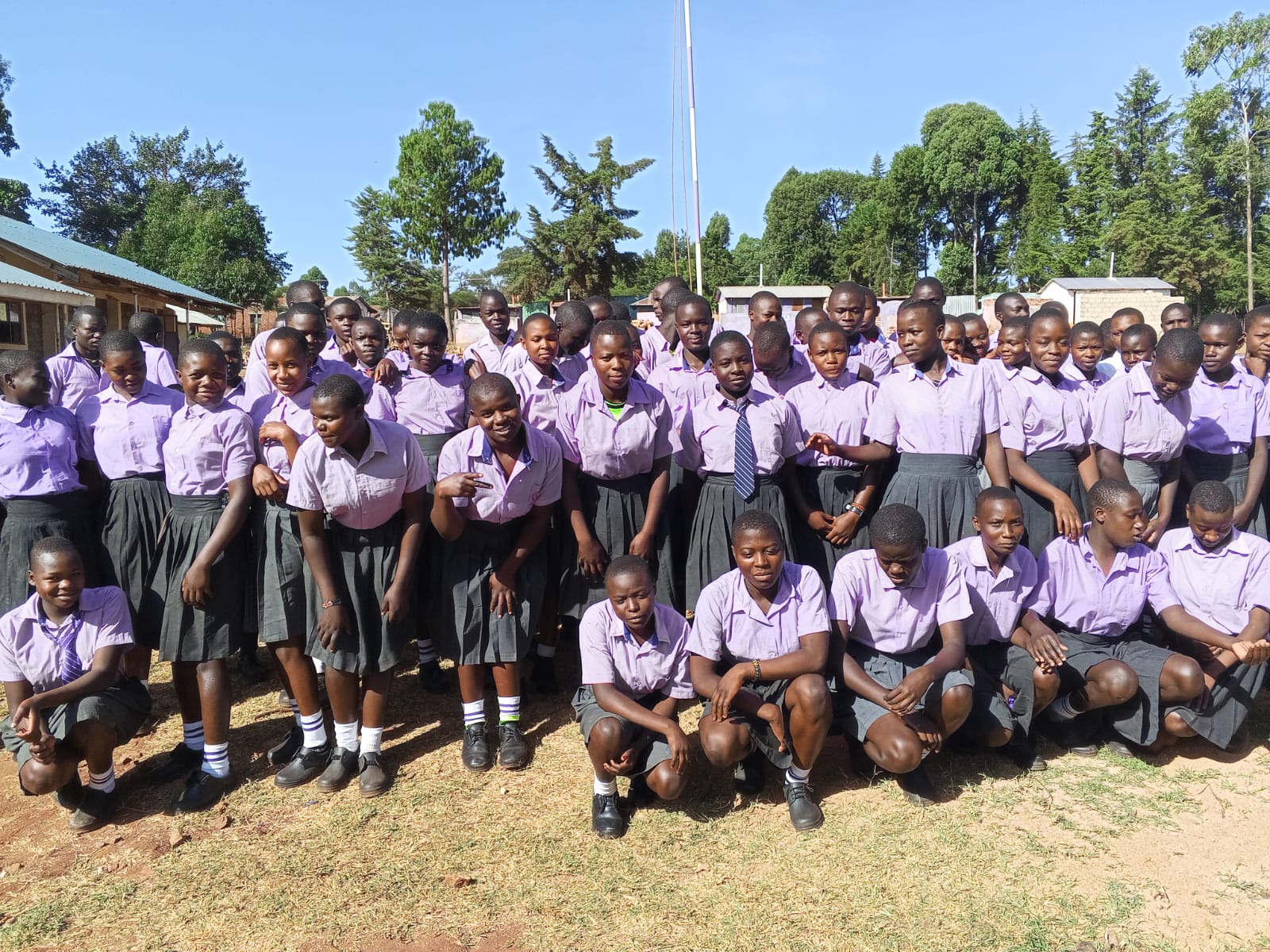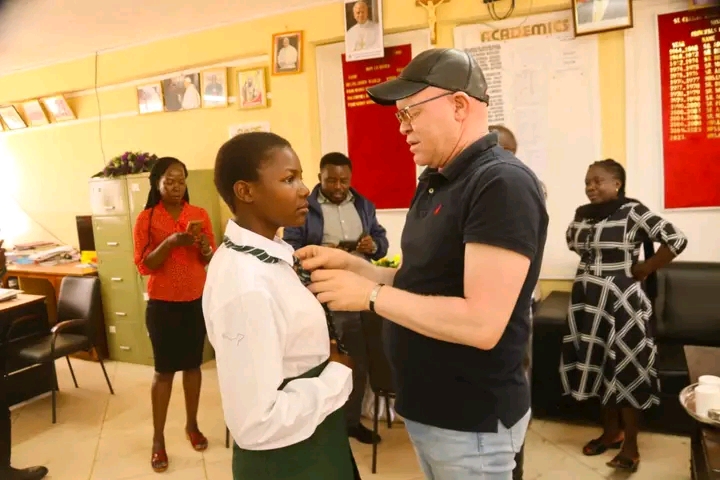By Roy Hezron
A key challenge in students accessing health services under the School EduAfya programme is the lack of required registration documents – the National Education Management Information System (NEMIS) number, a recent study has shown.
The study which was conducted by the University of Nairobi’s Institute of Development Studies (IDS) also revealed that there was limited involvement of adolescents and young people in the design of the EduAfya scheme; with information gaps regarding the scheme being evident among most stakeholders especially the schools, while the health facilities had conflicting information.
The research project, whose funding was from the Hivos Southern Africa Regional Sexual and Reproductive Health and Rights (SRHR) Fund, focused on the roll-out of Universal Health Coverage (UHC) scheme for public secondary schools in the country; the EduAfya.
The research aimed at understanding how the roll-out of the Edu-Afya health scheme has impacted students especially in-school adolescents, and whether it has enhanced adolescents (both boys and girls) access to health services, more particularly the Sexual and Reproductive Health services.
It also sought to understand whether the scheme was responding to the unique sexual and reproductive health needs of adolescents (age and gender-specific), service provision (preventive, promotive or curative), and the inclusiveness of services in a study that began in January 2020 and concluded in March 2021.
The study was conducted in two counties of Kiambu and Murang’a that represented urban and rural settings and had a fair representation of national, county, and sub-county schools; a good mix of boys and girls schools as well as day and boarding schools.
The research, which focused on diverse populations of adolescents, health care providers, school heads and National Hospital Insurance Fund (NHIF) representatives, showed that whereas the EduAfya scheme was open to all students in public secondary schools, most of the school representatives and the students lacked this awareness of how students could benefit.
According to the research findings, students could access general health services but the health facilities could not submit claims to NHIF for reimbursement.
“Results did not also show any effort by schools or health providers to encourage students to use sexual and reproductive health services under EduAfya, and in reality, such services (for instance preventive services) were excluded,” read the survey summary in part.
In a report that was prepared by Julie Mwabe at Presidential Policy and Strategy Unit (PASU); Dr Karen Austrian of Population Council and Dr Sheila Macharia, an independent consultant; in the report titled Impact Of Covid-19 On Adolescents In Kenya by the Executive Office of the President under the Presidential Policy and Strategy Unit (PASU) in collaboration with Population Council, showed that on health services and menstrual hygiene, 50 per cent of interviewed adolescent girls could not access sanitary pads since the onset of the pandemic.
With contributions and recommendation from girls and boys in advisory groups in Nairobi, Kisumu, Kilifi and Wajir counties; the report showed that a significant proportion of adolescent girls and boys reported skipping health care services despite being sick due to costs.
The Ministry of Health information system records indicated that over 328,000 girls got pregnant in the first year of the pandemic which was a significant number.
Further, 2–4 per cent of 15–19-year-olds were married, translating to over 100,000 early marriages. Of these girls, 32 per cent got married after COVID-19 started, 44 per cent got married because of pregnancy, 16 per cent claimed they would not be married if there was no pandemic and 24 per cent stated that it was not their choice to be married.
UoN’s IDS research also revealed further that there was a general lack of a robust health information system for generating data on adolescent access and use of health services including sexual and reproductive health services, which made it difficult to get accurate data on services used by the students and the frequency of use.
The study recommended that NHIF, schools (including students) and health facilities address barriers affecting students’ enrolment in the scheme, with NHIF providing regular sensitization and updates to schools and health facilities regarding the scheme, as well as get feedback and incorporate it in improving the scheme.
It recommended further that there was need to bolster the capacity of health facilities to provide health services to students through the scheme, as well as document relevant data to understand the nature of students’ interaction with services provided through the EduAfya scheme.
While releasing the 2020 Kenya Certificate of Secondary Education (KCSE) on May 10, 2021 at the Kenya National Examination Council headquarters, Education Cabinet Secretary Prof George Magoha revealed that a total of 652 girls sat the 2020 KCSE examination in hospitals after delivery, with Bungoma (43), Meru (38), Nakuru (36), Kisii (36) and Nandi (31) counties recording the highest numbers In 2019, a total of 282 female candidates sat the KCSE Examination in hospitals after delivery with Bungoma (17), Kakamega (16), Meru (16) and Makueni (16) counties leading with the highest of candidates.
“We have noted that the number of cases of candidates sitting the examinations upon delivery went up in 2020 showing that the long school closure due to COVID-19 may have driven our learners into many temptations at a time most households were facing enormous challenges,” said Prof Magoha during the release of 2020 KCSE examination in May last year.
In the push towards achieving Universal Health Coverage (UHC), the government initiated a secondary school health programme in 2018 known as the EduAfya through the NHIF for students in public secondary schools countrywide, as part of the government’s ‘Big-Four’ Agenda.
The Ministry of Education normally retains Sh1,350 out of the total allocation of Sh2,000 from the medical vote head to fund the medical cover under the five-year contract between the ministry and NHIF, with the rest of the vote head funds (Sh650) being disbursed to schools to meet other medical and insurance related expenses.
In the guidelines on implementation of Free Day Secondary Education for the Year 2022 through a circular issued on February 7, 2022 for the provision of comprehensive medical cover to all students in public secondary schools, the Principal Secretary in the State Department of Early Learning and Basic Education Dr Julius Jwan directed all County Directors of Education to ensure school principals acquaint themselves with the terms of the cover, to ensure that students access quality health services from NHIF accredited health facilities and cease requesting parents to meet medical expenses.
He also directed the County education bosses to ensure schools fully register students in NEMIS for them to obtain an NHIF number to be able to access services even when on holidays.
Still school heads were to ensure that all leaners know their Unique Personal Identification (UPI) and NHIF numbers by entering the information in their school IDs.
Further, the Principals through the circular, are required to inform parents about the requirement for the cover and send death notification letters to the Principal Secretary within seven days of death of any student in their schools and also help their parents or guardians fill a claim form for last expense and group life benefits.






